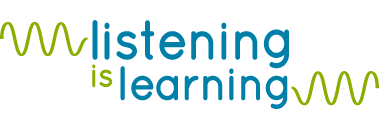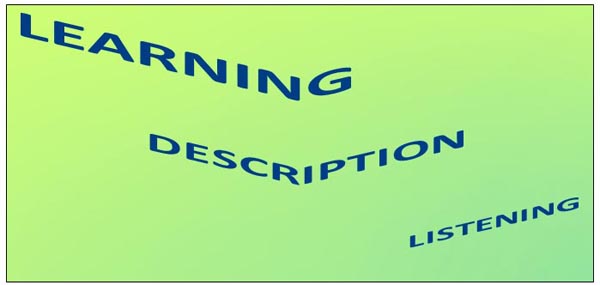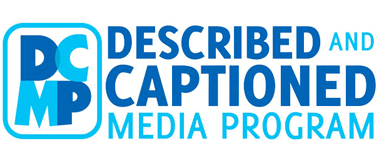<< Learning Center
Media Accessibility Information, Guidelines and Research

Learning-Focused
Please note that teachers may need to modify this lesson plan to address the varying needs of individual learners in their classes. It should also be noted that the use of the fennec fox mask or blindfold is for sighted students. However, all students in the class should participate in all the activities, and all accommodations or additional materials (i.e. Brailed text where applicable) must be provided for students with visual impairments to fully participate and engage in the lesson.
Essential Question:
How is listening learning?Activation Strategies:
- KWL Chart: Begin the lesson with a three-column organizer: What I Know, What I Want to Know, What I Learned. Have students fill in the first two columns in advance of the lesson. Return to the last column as a summarizing strategy for the lesson.
- Acrostics: Give students the key word/concept that will be addressed in the lesson. Ask them to write a detail or descriptor with which they are already familiar that starts with each of the letters of the key word/concept.
- Word Splash: Students are given a “splash” of key words from the lesson. They should write a few meaningful sentences to capture their predictions and set purpose for learning using the terms: listening, learning, and description.
K |
W |
L |
D
E
S
C
R
I
P
T
I
O
N

Acceleration/Previewing:
- HOTQ (Higher Order Thinking Question): What is the relationship between listening, learning, and description?
- Present question to students and allow them to answer the question. The question will be revisited after the following activities. This is a lead off question that provides students with a road map of where the lesson is taking them. At this point, they may not be able to provide a meaningful and robust answer, but they should be able to at the end of the lesson.
- Word Maps for Vocabulary: Listening, Learning, Description
- Teachers should provide the definition for each of the above terms in addition to covering them during discussion of description. In addition, consider pulling information from the Description Key (grade-level appropriate) and highlight the following Listening is Learning video.
- Possible additional questions to guide/facilitate discussion:
- Why is listening important?
- How do we listen?
- How does listening improve my understanding?
- How do you know you have learned something?
- Why do we describe things?
- Possible template: Feel free to tailor a template to specific needs of a class/topic.
Teaching Strategies:
- Frontloading
- Scaffolding
- Graphic Organizers
- Collaborative Groups
- Guided Practice
- Summarizing
Distributed Guided Practice/Summarizing Prompts:
- Experiencing Description:
- All students will watch a DCMP described video. (Check our catalog and look for the symbol “D.”) Sighted students will watch the video while wearing fennec fox masks (or blindfold). During the first viewing, description should be turned off. After viewing the video, students need to answer the following questions:
- What does it look like?
- What does it taste like?
- What does it smell like?
- What does it sound like?
- What is the mood, setting, theme, plot, main idea, etc.?
- Discuss answers as a class.
- Students will view the video a second time with description turned on and answer the same questions from number 1. Again, sighted students should wear a fennec fox mask or blindfold.
- Class Discussion:
- Additional HOTQ’s (Higher Order Thinking Questions):
- Compare first view of video to the second view.
- How did wearing fennec fox mask impact your experience?
- How were you able to answer the questions after the first viewing (before watching the video with description)?
- How did description impact your experience and ability to answer the questions?
- Was the description effective in “filling in the gaps” for blind students?
- Play a segment of the video again in which sighted students are allowed to watch the video with description ON and NO mask or blindfold.
- Check For Understanding/Assessment:
- What is the relationship between listening, learning, and description?
- Stations: Students should visit each station with their assigned groups.
Station One: Name the object by listening to description (sighted students should wear the fennec fox mask or blindfold). Students should work in pairs. One student reads the description provided while the other student listens to the description (if partner is sighted, they wear the fennec fox mask or blindfold). The student listening to the description must name the object being described. Students should take turns in their roles. After completing the activity, student should check their answers on the answer sheet provided by teacher.
Station Two: Write the description of an object. Sighted students will complete the activity while wearing the fennec fox mask or blindfold. The objects should be placed in brown paper bags. Students should feel the object in the bag (sighted students should wear the fennec fox mask or blindfold). After “feeling” the object, the student will write a description of the object. Sighted students can remove their mask or blindfold before writing their description. After the description is written, students may peek into the bag to see how “accurate” their description represents the object. Please make modification for students with visual impairment in regards to checking the accuracy of their descriptions. Students should not remove any of the objects from the bag.
Station Three: Art Gallery: Students will “visit” the Art Gallery in pairs. Partners will take turns describing art pieces to one another. Sighted students should wear the fennec fox mask or blindfold when listening to the description. For students with visual impairments, the teacher must provide textured pieces for them to describe to their partner. Students should take turns in their roles. Students should also view the art pieces to assess their skills at being describers.
Summarizing Strategies:
- Finish last column of KWL Chart: What I learned about listening?
- Give students the opportunity to share.
- 3-2-1 Countdown: Students write down 3 of the most important things learned, 2 questions that still need to be answered, and 1 way their learning connects to what they knew before.
- Students should turn these in to their teacher as a tool to check for understanding and address areas that may need re-teaching.
- Answer Essential Question: How is listening learning?
- Assessment Tool: Students answer the question in paragraph format.
Culminating Activity:
Students will work in groups of 3-4 to create a 15-20 minute educational video (from any content area). Video must have educational value. After creating the video, students must also write a description script for the video. Students should follow the guidelines addressed in the Description Key when creating the description script for their video.
Additional Sources for Described Media:
DCMP on YouTube
Narrative Television Network
Movies for the Blind
Learning-Focused—Increase Teacher Effectiveness

